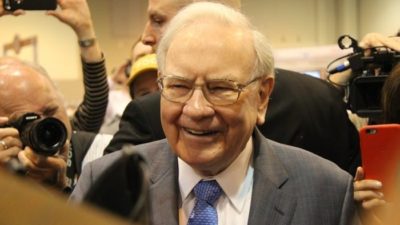Diversifying is a word that is thrown around a lot in investing, but what does it mean? Simply put, diversifying means following the maxim of not putting all your eggs in one basket. In an investing context, this means varying your investments so that you have an appropriate mix.
What is an appropriate mix for you will depend on a number of factors. These include your goals, timeframes, and risk profile. Those with longer time horizons may be in a position to take on more risk as they have time to ride out volatility in market returns. People who are comfortable taking on more risk may choose a great proportion of shares over bonds.
Diversification is part of structuring a portfolio that is right for your needs and goals. Your investment allocation should reflect your current life stage as well as helping shift you to the next one. In order to ensure your portfolio is appropriately structured it is important to understand the different types of diversification.
1. Asset diversification
Asset diversification refers to the mix of assets in your portfolio. This could be comprised of shares, bonds, property, precious metals, or other assets. Various asset types perform differently in different economic environments – in a downturn gold and bonds tend to store value, whereas when the economy is firing, shares tend to outperform.
The exact mix of assets you hold will depend on your life stage and goals. Those nearing retirement tend to focus on capital preservation and income generation. Others may be focused on capital growth and less concerned about receiving income by way of distributions.
The Betashares Gold Bullion ETF – Currency Hedged (ASX: QAU) is backed by physical gold bullion held in a London vault. Betashares discloses the actual gold holdings backing the fund and value of fund assets daily on the fund website. The fund hedges its US dollar exposure to allow for a transparent exposure to the price of gold. Management costs are 0.59% per annum.
2. Industry diversification
Industry diversification refers to the mix of industries in which the companies you are invested in operate. It is preferable to invest in companies across a range of industries to ensure you are not too exposed to any one. This way, if there is an industry-wide issue you will not be too badly impacted.
The Betashares Australian Sustainability Leaders ETF (ASX: FAIR) provides exposure to a portfolio of companies screened to preference businesses engaged in sustainable business practices and avoid those engaged in activities deemed inconsistent with responsible investment considerations.
The ETF returned 22.15% in the year to 31 October. Management costs are 0.49% per annum and distributions are made twice annually. Top holdings include CSL Limited (ASX: CSL) (4.6%), Resmed Inc (ASX: RES) (4.3%), Suncorp Group Ltd (ASX: SUN) (3.9%), Sonic Healthcare Ltd (ASX: SHL) (3.8%), Brambles Limited (ASX: BXB) (3.8%), Insurance Australia Group Ltd (ASX: IAG) (3.8%), Cochlear Limited (ASX: COH) (3.7%) and Telstra Corporation Ltd (ASX: TLS) (3.7%).
3. Company diversification
Company diversification refers to the diversity of the individual companies in your portfolio. Modern portfolio theory argues that by holding multiple stocks investors can reduce unsystematic risk, thus maximising returns for a given level of risk. Essentially, holding more shares reduces the volatility of returns on your overall portfolio.
The iShares Core S&P/ASX 200 ETF (ASX: IOZ) tracks the S&P/ASX200 Accumulation Index befores fees and expenses and returned 19.10% in the year to 31 October. Distributions are paid quarterly and management fees are 0.09% per annum.
Top holdings include Commonwealth Bank of Australia (ASX: CBA) (7.81%), CSL (6.88%), BHP Group Ltd (ASX: BHP) (6.13%), Westpac Banking Corp (ASX: WBC) (4.63%), National Australia Bank Ltd (ASX: NAB) (4.10%), Australia and New Zealand Banking Group (ASX: ANZ) (3.94%), Woolworths Group Ltd (ASX: WOW) (2.83%), and Wesfarmers Ltd (ASX: WES (2.61%).
4. Geographic diversification
Geographic diversification refers to diversifying by physical location. For Australian investors, this means venturing offshore. The ASX represents only a small portion of the investable universe. No single economic region can be expected to consistently outperform.
The Vanguard MSCI Index International Shares ETF (ASX: VGS) invests in many of the world's largest listed companies in developed countries. It is not hedged so investors are exposed to changes in the value of the Australian dollar. Returns were 16% for the year ended 31 October.
Management fees are 0.18% per annum and distributions are made quarterly. Exposure is centred on the US (64.3%), followed by Japan (8.6%), United Kingdom (5.6%), France 3.9%, and Canada (3.5%). Top holdings include Apple, Microsoft, Alphabet, Amazon, Facebook, JP Morgan Chase & Co, and Johnson & Johnson.
5. Strategy diversification
Strategy diversification refers to your mix of investment strategies. Some people are value investors while some seek growth shares. Others prefer small cap shares over large. We all have reasons for choosing the shares that we do. The important thing is not to blindly follow one strategy at the expense of all others.
The iShares Global Healthcare ETF (ASX: IXJ) provides investors with exposure to the S&P Global 1200 Healthcare Sector Index before fees and expenses. The Index measures the performance of biotechnology, healthcare, medical equipment, and pharmaceutical companies globally. The ETF returned 13.64% in the year to 31 October 2019.
Management fees are 0.47% and distributions are made twice yearly. Exposure is centred on the US (68.05%), followed by Switzerland (10.03%), Japan (6.06%), United Kingdom (4.80%), Germany (2.48%), Denmark (2.26%), and Australia (2.07%).
Top holdings include Johnson & Johnson (6.70%), UnitedHealth Group Inc (4.94%), Novartis AG (4.33%), Merck & Co Inc (4.24%), Roche Holding Par AG (4.05%), Pfizer (3.92%), Abbott Laboratories (2.80%), Medtronic PLC (2.77%) and Amgen Inc (2.60%).
6. Time diversification
Time diversification refers to the practice of buying and selling assets over time. Most people add to their portfolio gradually as their assets build up over their lifetime. They may also sell assets along the way. Assets are therefore bought and sold during different points of the market cycle over time. This has the effect of 'averaging out' the effect of poorly timed decisions or poor decisions full stop.
Foolish takeaway
Diversification is fundamentally a simple concept and one that underpins responsible portfolio management. Putting it into practice can be more complex, however, than it first appears. Patience and a good understanding of your goals are key.








